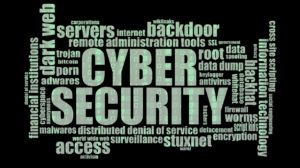We all love free things, right? But the truth is that sometimes free is not free, it comes at a price. Connecting your device to any public Wi-Fi can be sweet since it’s free, but there are dangers associated with such connections. Public Wi-Fi is found in public areas like coffee shops, hotels, airports, and malls. Most people connect to these hotspots frequently without even thinking twice.
What are the Dangers?
1. Man-in-the-Middle Attacks (MitM)
The same characteristic that attracts customers to free Wi-Fi hotspots is the same feature which attracts hackers. This attack is a form of spying whereby when you connect your device to the internet, data from one point (computer) is sent to another point (website/service) and the vulnerabilities may let the attacker get in the middle of the transmissions and study them. Therefore, whatever you thought was confidential is not anymore.
The fact that it doesn’t need an authentication for one to connect creates the perfect chance for the attacker to access unsecured devices through the same network, so rather than communicating to the hotspot, you will be sending all your important information to a hacker, such as your credit card information, important emails, and the security credentials, and he’ll be able to access all your systems just like you.
2. Distribution of Malware
Hackers are able to slip malware to your device without your knowledge if you connect to an unsecured connection. A software vulnerability is a security weakness or hole in any software program or operating system that hackers can exploit by writing a code that targets one specific vulnerability, then it injects that malware to your device.
If your device allows file-sharing across networks, a hacker can plant infected software to your device easily. Some hackers can even hack the connection spot and this causes a pop-up to appear in the connection process. Clicking the pop-up window will install the malware. Infected software on your devices can financially cripple your business.
3. Unencrypted Networks
Encryption implies that the information which is sent between your computer and a wireless router is a secret code. This is to ensure that anyone without the key required to decipher the secret code cannot read or understand the information. A good number of routers are usually shipped from the manufacturing factory with the encryption usually turned off by default, but an IT expert will turn it on after setting up the network.
4. Snooping & Sniffing
Hackers buy particular software kits and devices to enable them to eavesdrop on any Wi-Fi signals. The method enables them to see everything you are doing online such as the Web pages you’ve visited and your login details. They are even capable of hijacking your accounts.
5. Rogue Hotspots
The malicious access point tends to trick victims who end up connecting to it since they may think that it’s genuine since its name sounds reputable. This will enable hackers to view and access all your sensitive information and even harvest your most critical business data.
6. Being Exposed to Worm-Attacks
Worms are different from viruses in that viruses need a program to attack in order to compromise a system successfully, but worms are able to wreak havoc by themselves. When you connect to any public Wi-Fi, you risk a worm coming from a different device which is connected to your computer’s network.
7. Username and Password Vulnerability
Connecting your device to public networks will make you plus your employees susceptible to having your usernames and passwords stolen after you log in. The websites using secure socket layer offer a required security level.
8. Malicious Attacks via Ad-hocs
These are peer-to-peer networks that connect 2 computers directly. When you connect to any public Wi-Fi, your device is likely to discover other networks and this enables hackers to directly connect to them.
How do you Stay Safe on Public Wi-Fi?
Dos
– Remove file sharing
– Just visit sites that use HTTPS
– USE a VPN. This ensures the public Wi-Fi connections remain private.
– Log out of your accounts after use.
Don’ts
– Don’t let Wi-Fi connect automatically to other networks.
– Do not log in to accounts through an app which has sensitive information, but visit the website instead to ensure it uses HTTPS prior to logging in.
– Avoid accessing websites which have your sensitive information.
– Don’t log in to any network that is not password-protected.




